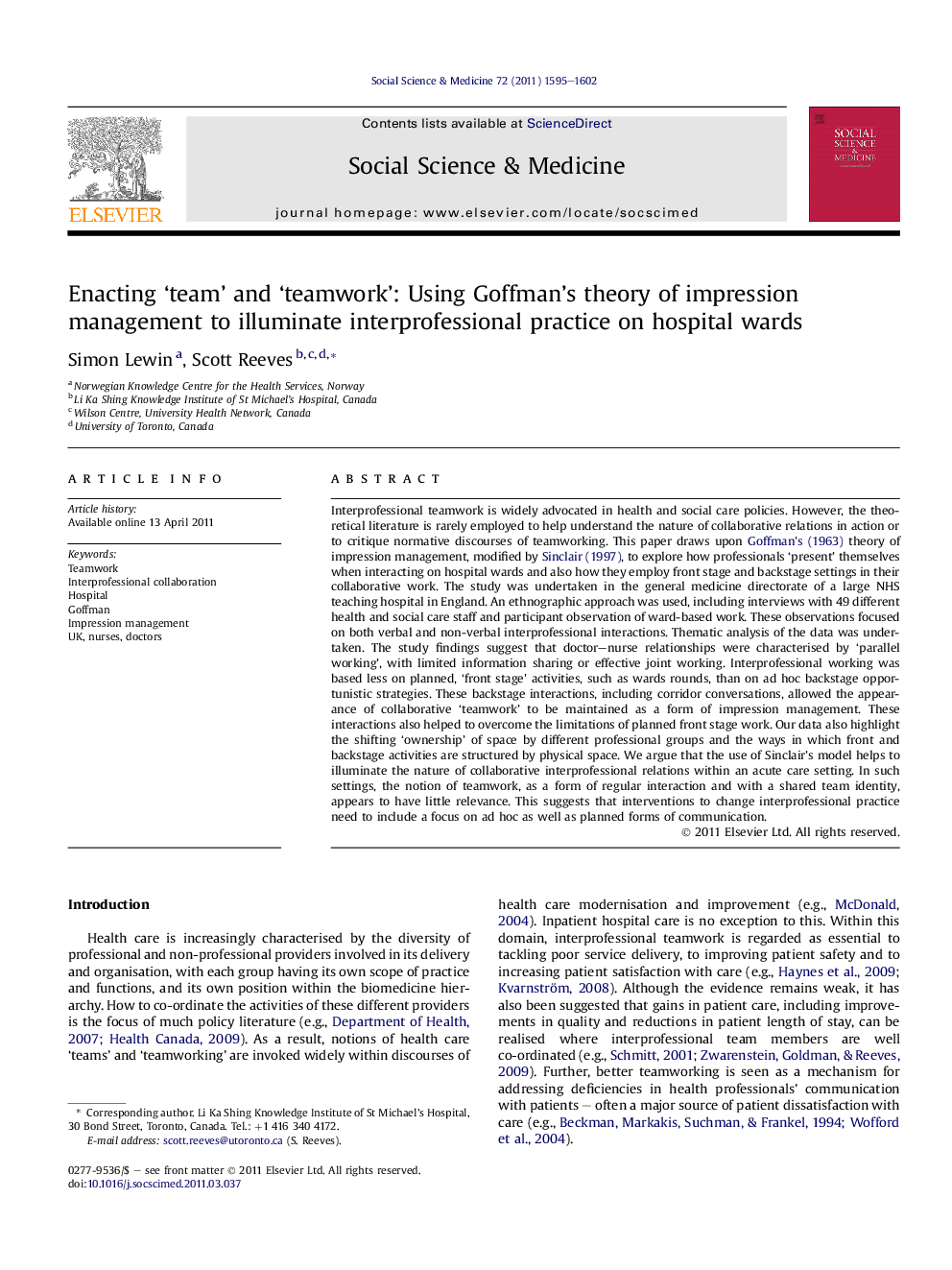| کد مقاله | کد نشریه | سال انتشار | مقاله انگلیسی | نسخه تمام متن |
|---|---|---|---|---|
| 952934 | 927555 | 2011 | 8 صفحه PDF | دانلود رایگان |

Interprofessional teamwork is widely advocated in health and social care policies. However, the theoretical literature is rarely employed to help understand the nature of collaborative relations in action or to critique normative discourses of teamworking. This paper draws upon Goffman’s (1963) theory of impression management, modified by Sinclair (1997), to explore how professionals ‘present’ themselves when interacting on hospital wards and also how they employ front stage and backstage settings in their collaborative work. The study was undertaken in the general medicine directorate of a large NHS teaching hospital in England. An ethnographic approach was used, including interviews with 49 different health and social care staff and participant observation of ward-based work. These observations focused on both verbal and non-verbal interprofessional interactions. Thematic analysis of the data was undertaken. The study findings suggest that doctor–nurse relationships were characterised by ‘parallel working’, with limited information sharing or effective joint working. Interprofessional working was based less on planned, ‘front stage’ activities, such as wards rounds, than on ad hoc backstage opportunistic strategies. These backstage interactions, including corridor conversations, allowed the appearance of collaborative ‘teamwork’ to be maintained as a form of impression management. These interactions also helped to overcome the limitations of planned front stage work. Our data also highlight the shifting ‘ownership’ of space by different professional groups and the ways in which front and backstage activities are structured by physical space. We argue that the use of Sinclair’s model helps to illuminate the nature of collaborative interprofessional relations within an acute care setting. In such settings, the notion of teamwork, as a form of regular interaction and with a shared team identity, appears to have little relevance. This suggests that interventions to change interprofessional practice need to include a focus on ad hoc as well as planned forms of communication.
Journal: Social Science & Medicine - Volume 72, Issue 10, May 2011, Pages 1595–1602